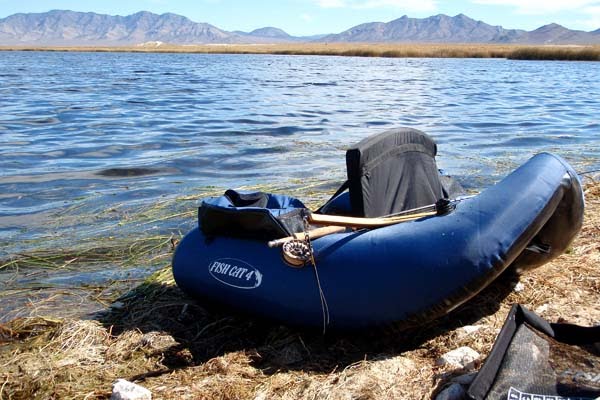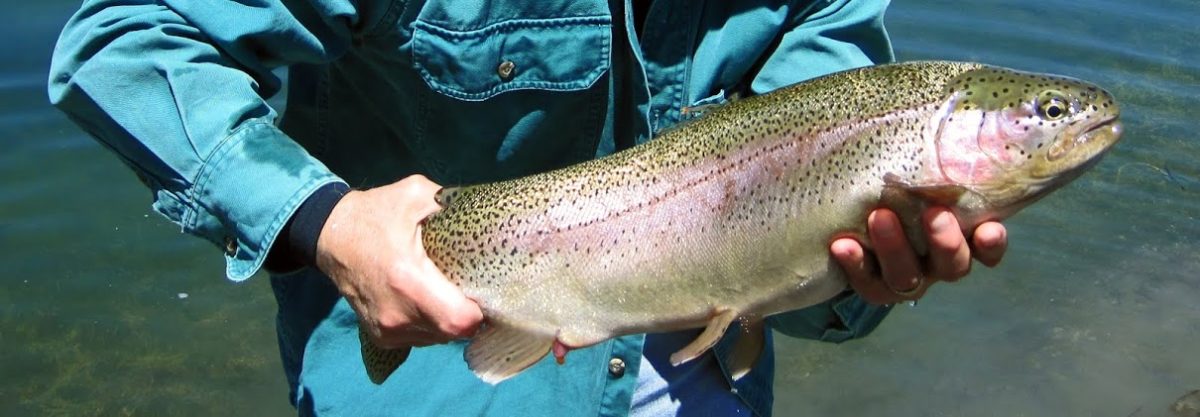
I stole another “sanity” day from work to fish Wayne Kirch Wildlife Management Area (KWMA) on Thursday. My boss told me to take time off now since the next six months will be too busy to allow it. I didn’t say it at the time but I thought, “Heck, it’s always that way around here… it never lets up.” Nonetheless, with her permission I took advantage of the hole in my schedule to sample the fall weather at the KWMA.
The KWMA is located in the White River Valley in northeastern Nye County off of State Route 318. It is composed of a total of 14,815 acres, including five reservoirs. The KWMA habitat, raging from sagebrush to wet meadows and grasslands, supports an abundance of fish and wildlife. Its wetlands are among the most productive wildlife habitats in Nevada. It provides food, cover, and water for numerous species of birds, mammals, reptiles, and amphibians. The Tule, Adams-McGill, Cold Springs, Dacey, and Haymeadow reservoirs provide water habitat for fish and waterfowl (although I’ve never read fishing reports on Tule Reservoir). The uplands on KWMA include sagebrush, alkali desert scrub, annual grassland and desert wash. Sagebrush provides important habitat for mule deer, pronghorn, and sage grouse.
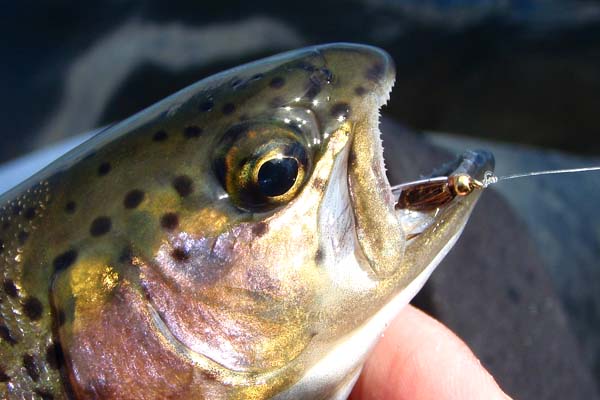
The State of Nevada purchased the KWMA land from Ervin Hendrix in 1959, who had purchased it from the Adams-McGill Company in 1943. The state wildlife agency purchased the land (formerly known as Sunnyside) for its wetland waterfowl value. The four major reservoirs within the 14,815 acres are Adams-McGill (785 surface acres), Dacey (185 surface acres), Cold Springs (275 surface acres), and Haymeadow (190 surface acres), but to date I’ve only fished Cold Springs and Haymeadow (thus, I have reasons for more KWMA visits).
When I arrived at Haymeadow at 8:30am, after my 2½ hour drive, the temperature was just getting to 50 degrees from its overnight low in the mid-30s, but by noon it had warmed into the low 70s, although the water temperature did not feel that cold…yet. All the KWMA reservoirs are relatively shallow, with depths averaging six to seven feet. The water weeds, while starting to fade in the cooling temperatures, were still occupying much of the lake’s volume. Navigating the float tube wasn’t the issue as much as casting along and between the numerous weed beds. Except for a small, short lived, late morning mayfly hatch most of the trout were feeding three to five feet under the surface. I had equal luck with several flies, including small brown and green streamers, hares ear and beaded prince nymphs, as well as callibaetis nymphs.
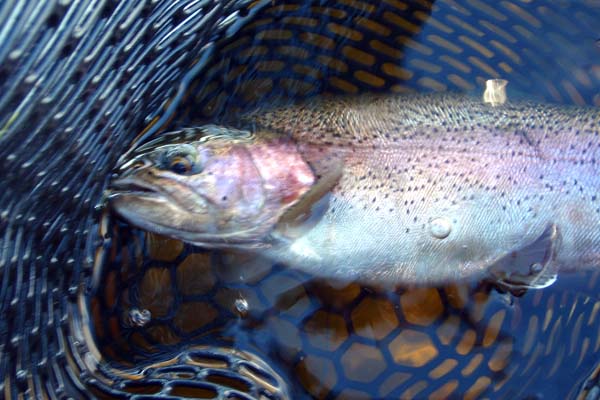
Action was fairly good from the start, but most trout seemed around twelve inches, plus or minus. They were pretty rainbows with deep, saturated colors. By mid-day I started to hook up with larger trout, with a smattering of small bass (eight inches and smaller) that were getting active as the temperature warmed. I did not count the fish, but I was easily over 20 fish by the end of the day. I was using a 4x tippet testing at about 5 pounds, and I think that gave me a false sense of security to play the fish harder. I didn’t want to lose flies in the weeds, and you can really haul in twelve-inch trout on a 4x tippet. But that kind of muscling won’t work with larger, heavier fish. The result often becomes the hook tearing out of the lip rather than the big fish coming to the net. And so, I lost many trout with hook pull-outs that day… but I never lost a fly. A stupid trade off, I know. I did land two rainbows around sixteen inches, and two others around fourteen. But my best hook-up of the day came around 1:00pm in a relatively shallow, weedy portion near Haymeadow’s earthen dam. I could sense it was large by the electrified pulsation it sent through the fly line as it thrashed its head under the water. It was the only fish of the day that I decided to play off the reel. With trout fifteen inches or smaller I usually strip them in with my left hand while holding the rod in my right casting hand, but since I was using a 4x tippet I had stripped in the two sixteen-inchers by hand… which might be why I lost so many trout. I like my reels to be right-hand retrieve, so when I decided to play this big trout off the reel I had to switch my rod hand from right to left and then I reeled like crazy to pick up the line laying on my lap. While doing that the trout thrashed on the surface and tail-slapped the line… his peduncle (the portion of his body preceding his tail, or caudal fin) was clearly visible and looked to be the size of my wrist. I quickly calculated a twenty inch trout of three to four pounds in weight. A few seconds after I got him onto the reel, and feeling a sense of relief for having done so, the hooked ripped out. I was not happy.
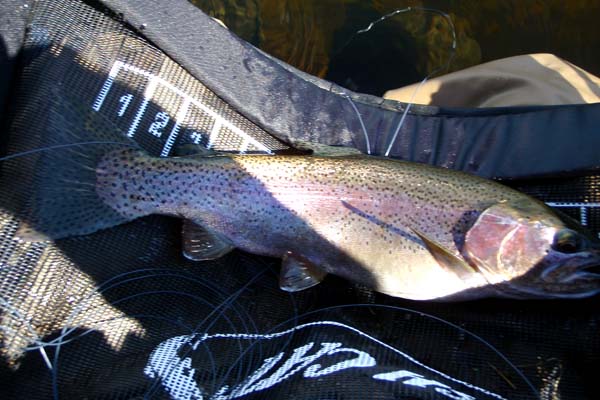
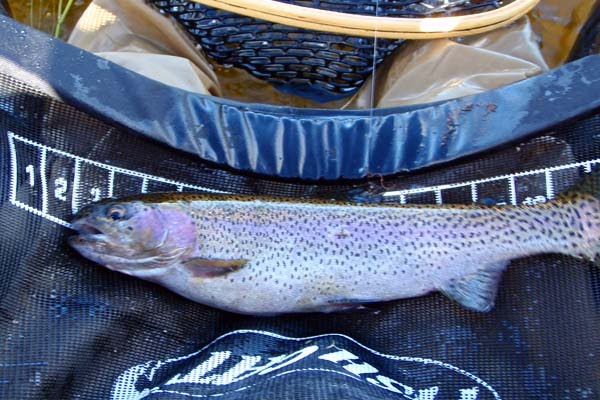
I decided I had enough, and headed towards the boat dock. It was near the boat dock that I landed the second sixteen inch rainbow, and that helped me to deal with my loss of the big trout. It was a good day. I got out of the water at 2:00pm, and thirty minutes later after stowing away all my gear I had started my drive back home. I had the Haymeadow reservoir all to myself for five and one half hours of fishing. It was a good day to be fishing, and a good day to escape the demands of my job. Any day I spend fishing is such a blessing from the Lord… but the truth is that every day, no matter what the circumstances, is a day that deserves our eternal thanks to God our Father.
